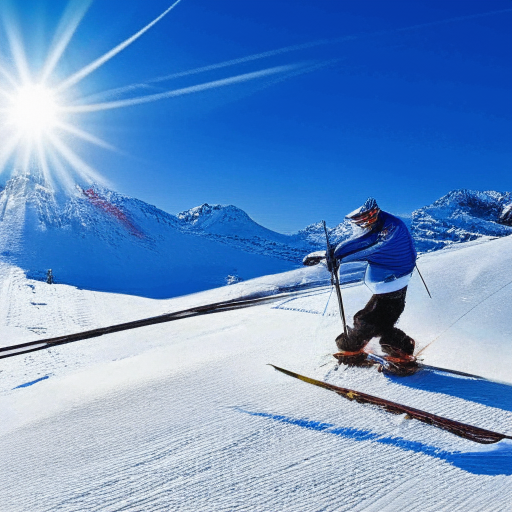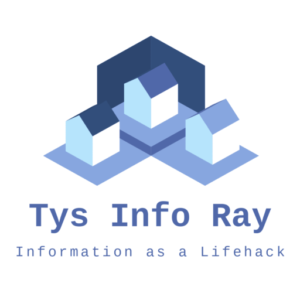Snow Blindness: Exploring the Visual Effects of Sun on Snow
As the winter season gets closer and snowy landscapes become more commonplace, it is essential to be aware of the potential risks that are associated with spending time in the snow. One such risk is snow blindness, which is a condition that only lasts for a short period but can result in substantial discomfort and vision damage. We are going to go into the science behind snow blindness in this blog article. We are going to investigate the visual impact that the sun has on snow, as well as explain strategies to take preventative measures and diagnose and cure this illness. We will be able to safely enjoy our winter wonderland if we first establish an awareness of the causes and then take the appropriate safeguards.

What is Snow Blindness?
The ailment known as snow blindness, which is referred to as photokeratitis in the scientific community, is characterized by transient damage to the cornea, which is the transparent front surface of the eyeglass. The condition manifests itself when the eyes are subjected to an excessive amount of ultraviolet (UV) radiation, which is mostly caused by the sun’s reflection on snow. Even though snow blindness is a condition that only lasts for a short period of time, it can cause significant pain, discomfort, and vision impairment.
The Visual Effects of Sun on Snow
To comprehend the phenomenon of snow blindness, it is necessary to investigate the interaction between the sun’s rays and the snow surface. In the process of reaching the atmosphere of the Earth, sunlight carries with it a variety of wavelengths of light, including ultraviolet radiation. After striking a snow-covered surface, these rays are reflected back into the atmosphere, where they continue their journey. By contrast, snow, in contrast to other surfaces, possesses a unique ability to reflect up to 80 percent of ultraviolet wavelengths.
Especially in high-altitude locations, where the air is thinner and atmospheric filtration of UV rays is diminished, the high reflectivity of snow can lead to enhanced exposure to ultraviolet radiation. This is especially true in environments where snow is present. Because of the high concentration of ultraviolet radiation, the protective mechanisms of the eyes can be overwhelmed, which can result in considerable damage to the cornea, conjunctiva, and other components of the eye.
Symptoms of Snow Blindness
The symptoms of snow blindness often appear several hours after being exposed to high levels of ultraviolet radiation. The severity of the symptoms might vary, but often involve the following:
Eye discomfort and pain: A sensation of grittiness or the feeling of having something in the eye.
Redness and swelling: The eyes may appear bloodshot, and the eyelids may become puffy.
Watery eyes: Excessive tearing as the eyes attempt to self-cleanse and alleviate irritation.
Blurry vision: Vision becomes blurry, making activities such as reading or driving extremely difficult.
Sensitivity to light: Increased sensitivity to light, known as photophobia, is often accompanied by headaches.
Sensation of halos: Some individuals may experience the perception of bright rings or halos around light sources.
Preventing Snow Blindness
Every time, prevention is preferable to treatment, and this is especially true when it comes to shielding our eyes from potentially damaging radiation. The following are some useful suggestions that can help reduce the likelihood of snow blindness:
Wear appropriate eyewear: When stepping out into wintry conditions, you must always wear goggles or sunglasses that are tailored to filter one hundred percent of ultraviolet rays. Be on the lookout for models that are labeled with UV400 or 100% UV protection.
Choose wraparound styles: Choose a pair of sunglasses or goggles that wrap around the sides of your face. This will provide you with the greatest possible protection from both direct and peripheral levels of ultraviolet radiation.
Use wide-brimmed hats: It is possible to provide additional shade to your face by wearing a hat with a neck flap or a hat with a wide brim. This will significantly reduce the quantity of ultraviolet radiation that reaches your eyes.
Check the UV Index: When planning activities that take place outside, it is important to check the local UV Index, which provides a daily forecast of the levels of ultraviolet light. During the peak UV hours, which normally occur between 10 am and 4 pm, you should avoid lengthy exposure.
Apply sunscreen: If you apply sunscreen to your face and around your eyes, you can help limit the amount of UV radiation that you are exposed to, even if it may not appear relevant.
Take breaks indoors: When you are going to be spending extended periods in icy areas, you should make it a practice to take frequent breaks indoors. This will allow your eyes to rest and recuperate from the bright direct sunlight that they are exposed to.
Treating Snow Blindness
Several measures can be taken to ease the discomfort and encourage recovery if you find yourself experiencing the symptoms of snow blindness despite taking precautions. These measures include the following:
Seek shade: To protect your eyes from future exposure to ultraviolet light, you should immediately go into a darkened area or indoors.
Remove contact lenses: To prevent further discomfort and to allow your eyes to rest and recover, you should remove your contact lenses if you wear them.
Apply cold compresses: To alleviate the discomfort and bring down the swelling, gently place a cold, damp towel over the eyes that are closed.
Use artificial tears: The use of artificial tears that are available without a prescription can provide temporary relief by maintaining the lubrication of your eyes and lessening the dryness that is produced by snow blindness.
Avoid bright lights: To prevent the symptoms of photophobia from becoming worse during the period of recuperation, it is important to minimize exposure to strong lights, such as those found on screens and overhead lights.
Rest your eyes: Avoid engaging in activities that have the potential to strain your vision, such as reading or using electronic devices, so that your eyes can have the opportunity to heal.
When to Seek Medical Attention
In the majority of instances, the symptoms of snow blindness will disappear within twenty-four to forty-eight hours, as the cornea begins to repair. However, you must get medical assistance if your symptoms continue to worsen or if they continue to persist. It is possible that problems or the development of subsequent infections could result from having treatment delayed.
Snow blindness can make wintertime activities less enjoyable, but if we are well-informed and take precautions, we can reduce the likelihood of experiencing snow blindness and still be able to enjoy the snowy landscapes without risk. Ensure that you are aware of the amounts of UV radiation, take pauses in areas that are shaded, and remember to wear eyewear that protects against UV rays. If you are experiencing symptoms of snow blindness, you should seek relief as soon as possible and, if necessary, visit a healthcare expert. If you take preventative measures and exercise caution, you will be able to safeguard your vision and completely appreciate the splendor of winter without encountering any obstacles. Observe caution, and have fun adventuring!
The post The Science Behind Snow Blindness appeared first on Survivalbite.
The post The Science Behind Snow Blindness appeared first on https://gqcentral.co.uk


Comments are closed